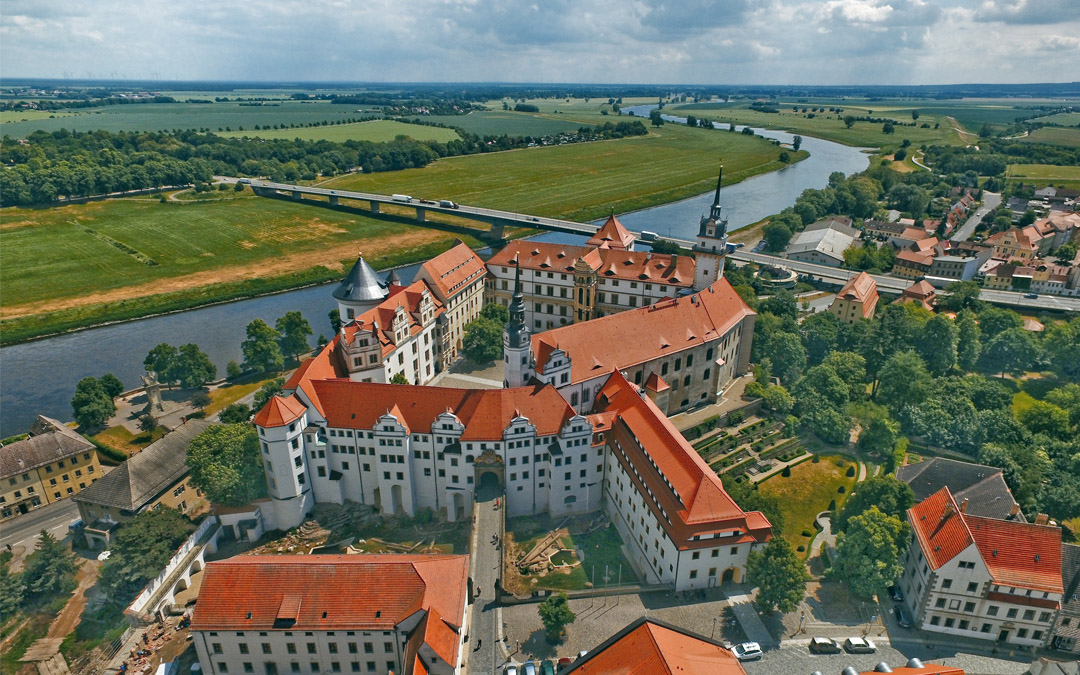Photo: North Saxony District Office
How the district of North Saxony is using the federal broadband funding program to ensure that citizens and companies are not left behind – fibre optics directly to the home creates the future-proof basis for the coming gigabit society
More than 7,800 kilometers of fiber optic cable, over 1,300 kilometers of underground construction and a good 900 new fiber optic distributors will ensure that citizens, businesses and numerous schools in the district of North Saxony will benefit from future-proof fiber optic connections directly to their homes by the end of the year. This will enable virtually unlimited symmetrical surfing speeds well into the gigabit range – whether (especially in times of corona!) for working from home, e-learning, video streaming, gaming, telemedicine or the real-time networking of entire company halls and machine parks.
The official go-ahead for the expansion project was given at the end of March 2019 with the start of construction in the town of Mügeln. A total of 28 municipalities in the district – divided into six project areas – are to be supplied with ultra-fast fiber optic connections. The fiber optic expansion in North Saxony is the largest investment in the history of the district to date. In total, more than 102 million euros are being invested to make more than 44,000 previously underserved households, over 3,300 companies and 71 schools fit for the digital future.

Photo: Landratsamt Nordsachsen
Almost two thirds of the fiber optic expansion in the district of North Saxony is being financed by funding from the federal broadband funding programme – a total of over 65.2 million euros. In addition, there are further subsidies from the Free State of Saxony; the remaining ten percent is being financed by the district itself.
Despite the corona crisis, the expansion in the numerous towns and districts in the project areas is being driven forward with commitment. The first households can already use the new high-speed connections. Further sections of the broadband network are gradually being put into operation. The employees of the companies carrying out the work are always required to comply with all hygiene and distancing rules in terms of infection protection when building the house connections.

“The fiber optic expansion in the district of North Saxony is a particularly challenging project – after all, only just under 200,000 inhabitants live in 11 towns and 19 municipalities in a total area of just over 2,000 square kilometers,” says Danny Trodler, project coordinator for broadband expansion, explaining the initial situation. “With around 25,000 inhabitants, the large district town of Delitzsch is already the most populous municipality in this very rural region. Around two thirds of the total area of our district is used for agriculture.”

District Administrator Kai Emanuel makes it clear how important it was and is to him not to miss the step towards the gigabit society: “In order to provide citizens and companies with fiber optics as the best technology, we as a district have not only invested a lot of money, but also a great deal of commitment in this huge project. The fiber optic network offers a future-proof, high-performance infrastructure with which we can continue to develop our district into an attractive place to live and work.”
The district administrator also welcomes the extensive financing of the gigabit expansion through federal and state funding: “We are very pleased about the broadband funding from the federal government and the co-financing from the state, as the fiber optic expansion would otherwise not have been feasible in the foreseeable future.”

Photo: Landratsamt Nordsachsen
One of the beneficiaries of the fiber optic expansion in the district of North Saxony is the Laas agricultural cooperative. It is located in the municipality of Liebschützberg in the far east of the district – almost on the border with the state of Brandenburg. The agricultural business produces high-quality food and animal feed on around 1,800 hectares of land. The cultivation of rapeseed, grain, maize and grass for marketing or feeding to the 400 dairy cows, young cattle and for use in the biogas plant are the main focus of production. The farm also has its own farm store and a car and truck workshop, including a car wash.

“Thanks to the new fiber optic connection, we are able to run our extensive operations more reliably and faster with high-tech applications,” says Sylke Hesse, CEO of the cooperative. “For example, we can now transmit and retrieve up-to-date data to our responsible state office in a matter of seconds. This is a task that used to take many hours and cost a lot of nerves due to the constant overloading of the telephone network.”
Hesse continued: “We are very grateful to the district for actively working to create equal living conditions in urban and rural areas with the help of federal and state funding. The expansion of fiber optics is an important point in sustainably improving the infrastructure and making rural areas more attractive.”

